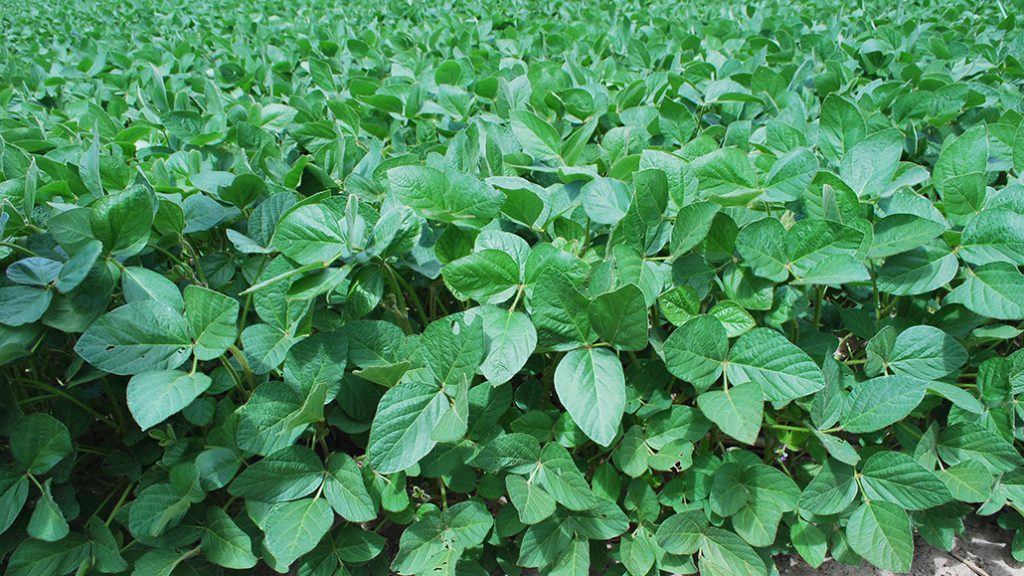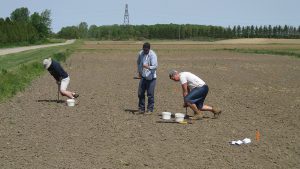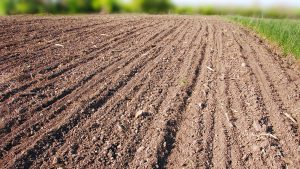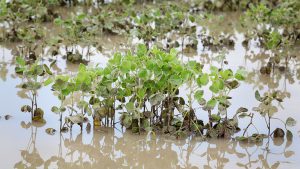Mapping the soybean genome
A CANADIAN GENOTYPING PLATFORM

AS YOU MAY already know, mapping the genome of livestock animals and crops — and identifying specific genetic markers linked to specific traits of interest within those genomes — is starting to enable breeders to make substantial improvements. In Canadian soybeans, for example, there is great interest in developing early-maturing crosses with improved yield and disease resistance.
What you may not know is that there’s a team of ten Canadian scientists who have developed a platform to map the soybean genome. The group, known as SoyaGen, is being led by Dr. François Belzile (soybean genomics) and Dr. Richard Bélanger (plant pathology) at Laval University in Quebec. Project breeders include Dr. Elroy Cober at Agriculture and Agri-food Canada (AAFC) in Ottawa, Dr. Istvan Rjacan at University of Guelph, Dr. Louise O’Donoughue from CÉROM in Québec, Éric Gagnon from Semences Prograin, and Dr. Tom Warkentin from the University of Saskatchewan.
The team also includes a nematologist, Dr. Benjamin Mimee from AAFC-St-Jean-sur-Richelieu, and two agricultural economists from the University of Saskatchewan: Dr. Richard Gray and Dr. Eric Micheels. With graduate students and others, the overall team is made up of more than 30 active members.
Of the two main soybean genotyping platforms, SNP arrays/chips and GBS (genotyping-by-sequencing), the SoyaGen team has employed the latter. Among other advantages, a GBS approach provides only useful markers — and comes in at about one-quarter the cost of SNP sample analysis. Although more skills in data processing are needed to use the GBS method, Belzile says the SoyaGen team has developed ‘user-friendly’ tools in their platform to make data management go more smoothly.
PROGRESS
At this point, the team has identified a set of 14 soybean markers within the genome that in turn help to identify exactly what version of a gene is present for four key genes related to crop maturity.
“These can be used to determine if two early lines differ in their genetic makeup at these genes, and therefore would be expected to produce progeny that are even earlier,” Belzile explains. “Also, we can screen progeny of crosses made between early and late lines to ensure that we keep only the progeny that has the genetic makeup that will ensure the desired degree of earliness.”
In addition to these markers, O’Donoughue’s team has been identifying additional genes that play a role in controlling maturity, which will further increase accuracy in the selection of breeding lines.
The team has also identified a set of four markers that will help select for increased resistance to soybean cyst nematode (SCN) and white mould. More markers are in development for both SCN and Phytophthora root rot. In all cases, Belzile says the identification of new markers is a demanding process that requires the detailed characterization of large sets of soybean lines (typically at least 150 lines) for both their reaction to the pathogen (resistance, susceptibility, and everything in between) and their genetic makeup — including analysis of tens of thousands of markers.
The SoyaGen genotyping platform is already being used by many researchers (users simply send their samples in and receive their analysis a few weeks later).
“It will obviously continue to evolve,” says Belzile, “to provide always greater efficiency and lower cost.”
Already, seed companies have used this genotyping service to better characterize the genetic makeup of the soybean lines that are used in their breeding work.
RAPID DIAGNOSTICS
This research project also includes the development (by Bélanger’s sub-team) of a rapid diagnostic tool to identify races of P. sojae, the pathogen which causes Phytophthora root rot, and progress on this front has been extremely fast.
The development of this tool is tremendously important, says Belzile, as soybean genes that confer resistance to P. sojae are only effective against certain races of the organism; in other words, not all soybean varieties will be resistant to the same races, or “types”, of P. sojae.
“There are many different races, or types of P. sojae, so knowing which race is present in the field is therefore absolutely essential to sow the soybean variety that will be resistant to this particular race,” he explains. “We are currently working to develop a more advanced version of the diagnostic toolkit that will allow the diagnosis to be carried out on a simple soil sample instead of a purified isolate of the pathogen, as is currently the case…It has nonetheless given us an unprecedented tool (worldwide) to identify races of P. sojae present in a field.”
REFLECTIONS ON RESEARCH
For Belzile, the most exciting aspect of this project has been seeing “the tremendous advances” that he and his team have been able to make over the last three years relating to a wide range of important areas of soybean genetics and breeding. Indeed, in a recent report to Genome Canada, the team’s Research Oversight Committee concluded that “the SoyaGen team has achieved pre-eminence in genotyping and analysis of the world global soybean germplasm.” This recognition and all the team’s achievements, says Belzile, “has given great visibility to the small, but very dynamic, community of Canadian soybean researchers.”
What’s most demanding about the work, he says, is the large scope of the team, large number of partners and of course, the significant challenges involved in the research itself. However, effective coordination mechanisms have been put in place to ensure goals are achieved.
When asked what’s ahead in the research, Belzile first explains that the current SoyaGen project, which runs until the end of 2019, is focused mostly on traits that were controlled by only one gene, or at most, a few genes.
“In working to meet the future research needs identified by our end-users, such as growers, seed companies, and processors, we now need to attack problems that will potentially prove more complex,” he says. “Many of the abiotic (for example, cold tolerance or drought) and biotic stresses (pests) that we aim to tackle in the SoyABio project (a new proposal submitted to Genome Canada for 2019-2023) are controlled by many genes.”
Learn more about this project at www.soyagen.ca.
This research is funded by Grain Farmers of Ontario in partnership with Genome Canada, Genome Québec, Western Grains Research Foundation, Saskatchewan Pulse Crop Development Board, Manitoba Pulse & Soybean Growers, Ministère de l’ Économie, Innovation et Exportation du Québec, Fédération des producteurs de grandes cultures du Québec, Sevita Genetics, La Coop Fédérée, Semences Prograin, and Syngenta. •




















